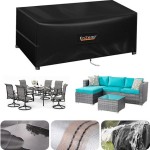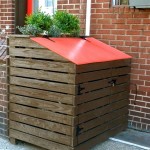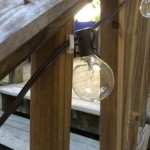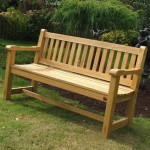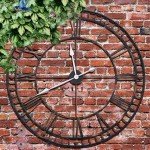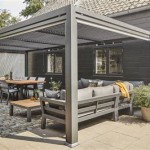Double-Sided Fireplace Indoor/Outdoor Cost: A Comprehensive Guide
A double-sided fireplace, also known as a see-through or peninsula fireplace, presents a unique architectural feature capable of serving as a focal point in both indoor and outdoor living spaces. This design allows the fire to be viewed from two distinct areas, creating ambiance and warmth simultaneously. When considering a double-sided fireplace for indoor/outdoor use, understanding the cost implications is crucial. This article provides a detailed overview of the factors influencing the cost, different types of double-sided fireplaces, installation considerations, and ongoing maintenance expenses.
Factors Influencing the Cost of a Double-Sided Indoor/Outdoor Fireplace
Several elements contribute to the overall cost of a double-sided fireplace intended for both indoor and outdoor enjoyment. These factors encompass the type of fireplace, the materials used, the complexity of the installation, and any necessary modifications to the existing structure.
Type of Fireplace: The type of fuel used significantly impacts the price. Common options include wood-burning, gas, and electric fireplaces. Wood-burning fireplaces typically have lower initial costs but may require more extensive venting and chimney systems, leading to higher overall expenses. Gas fireplaces offer convenience and cleaner burning but necessitate gas line installation. Electric fireplaces are generally the least expensive upfront and require minimal installation, but they may not provide the same level of heat or aesthetic appeal as gas or wood-burning models.
Materials: The materials chosen for the fireplace surround, hearth, and chimney (if applicable) play a significant role in the total cost. High-end materials such as natural stone, brick, or custom-fabricated metal will increase the price compared to more basic options like manufactured stone or prefabricated surrounds. The quality and durability of the materials also influence the long-term cost, as more durable materials require less frequent maintenance and replacement.
Installation Complexity: The complexity of the installation process is a key cost driver. Installing a double-sided fireplace often requires structural modifications to the wall or existing structure. This may involve framing, electrical work, gas line installation, and chimney construction, all of which add to the labor costs. Furthermore, accessing the installation site can impact pricing. If the location is difficult to reach or requires specialized equipment, the labor costs will likely increase. Projects that require permits and inspections also add to the overall expenses.
Venting Requirements: Proper venting is crucial for safe and efficient operation, particularly for wood-burning and gas fireplaces. The type of venting required depends on the fireplace type and local building codes. Wood-burning fireplaces need a full chimney system, which can be costly to install, especially if it requires significant height or has to navigate around existing structures. Gas fireplaces can sometimes use direct vent systems, which are less expensive than traditional chimneys but still require professional installation to ensure proper venting and safety.
Customization: Adding custom features, such as built-in storage for firewood, unique hearth designs, or specialized finishes, will increase the project's overall cost. Customization requires specialized labor and materials, which can significantly impact the budget. However, these bespoke elements can enhance the fireplace's aesthetic appeal and functionality, potentially adding long-term value.
Cost Breakdown by Fireplace Type
Understanding the typical cost ranges for different types of double-sided fireplaces is essential for budgeting purposes. These figures are estimates and can vary depending on location, specific features, and contractor pricing.
Wood-Burning Double-Sided Fireplace Cost: Wood-burning double-sided fireplaces typically range from $3,000 to $10,000 for the unit itself. Installation costs can add another $5,000 to $15,000, depending on the complexity of the chimney system and any necessary structural modifications. The total cost, therefore, can range from $8,000 to $25,000 or more. Ongoing costs include the price of firewood, chimney cleaning, and potential repairs.
Gas Double-Sided Fireplace Cost: Gas double-sided fireplaces generally cost between $4,000 and $12,000 for the unit. Installation typically ranges from $3,000 to $8,000, including gas line installation and venting. The total cost can range from $7,000 to $20,000 or more. Ongoing costs include the price of natural gas or propane and annual servicing by a qualified technician.
Electric Double-Sided Fireplace Cost: Electric double-sided fireplaces are the most budget-friendly option, with unit costs ranging from $1,000 to $5,000. Installation is relatively simple, often requiring only electrical connections, and typically costs between $500 and $2,000. The total cost can range from $1,500 to $7,000. Ongoing costs are limited to electricity consumption and occasional bulb replacements.
Installation Considerations for Indoor/Outdoor Double-Sided Fireplaces
Installing a double-sided fireplace that bridges indoor and outdoor spaces requires careful planning and consideration of several factors to ensure safety, functionality, and adherence to building codes.
Structural Requirements: The wall where the fireplace will be installed must be structurally sound and capable of supporting the weight of the unit and any associated materials. In some cases, additional framing or reinforcement may be necessary. Consulting with a structural engineer is recommended to assess the wall's load-bearing capacity and determine the required modifications.
Ventilation and Airflow: Proper ventilation is critical for wood-burning and gas fireplaces to ensure that combustion byproducts are safely vented to the outside. The venting system must be appropriately sized and installed according to manufacturer specifications and local building codes. For indoor/outdoor installations, consider the prevailing wind direction to ensure smoke or exhaust is not directed back into the indoor living space.
Clearances and Safety: Maintaining proper clearances from combustible materials is essential to prevent fires. Building codes specify minimum distances between the fireplace and adjacent walls, ceilings, and flooring. Ensure that the fireplace is installed with adequate clearance on both the indoor and outdoor sides. Consider adding a non-combustible hearth extension to protect flooring and provide a safe area around the fireplace.
Weatherproofing: For the outdoor portion of the fireplace, weatherproofing is crucial to protect it from the elements. Use durable, weather-resistant materials for the exterior surround and chimney. Consider adding a cover or enclosure to protect the fireplace from rain, snow, and wind when not in use. Proper sealing and flashing are essential to prevent water intrusion, which can damage the fireplace and surrounding structure.
Permitting and Inspections: Obtain all necessary permits from local building authorities before starting the installation. A permit ensures that the project meets all applicable building codes and safety regulations. Inspections are typically required at various stages of the installation process to verify that the work is being done correctly and safely. Failure to obtain permits and pass inspections can result in fines and delays.
Professional Installation: Due to the complexity of the installation process and the potential safety hazards associated with gas and wood-burning fireplaces, hiring a qualified professional is highly recommended. A professional installer will have the expertise to ensure that the fireplace is installed correctly, safely, and in compliance with all applicable codes. Check the installer's credentials, licenses, and insurance before hiring them.
Aesthetic Considerations: The design of the fireplace should complement both the indoor and outdoor living spaces. Consider the style of your home, the existing decor, and the overall aesthetic you want to achieve. Choose materials and finishes that blend seamlessly with both the indoor and outdoor environments. The fireplace can serve as a unifying element, creating a cohesive and inviting atmosphere.

White Mountain Hearth Dvct40csp Out Rushmore Clean Face Direct Vent Double Sided Indoor Outdoor Fireplace With Log Set 40 Inches

The Best Outdoor Fireplaces 2024 Modus

23 Luxurious Double Sided Fireplaces Fireplace Photos

45 Gorgeous Double Sided Fireplace Ideas Design Swan
Indoor Outdoor Fireplaces Offer The Best Of Both Worlds Heatilator

42 Inviting Fireplace Designs For Your Backyard Indoor Outdoor Fireplaces Home Dream House

Double Sided Indoor Outdoor Fireplace Heat Glo

White Mountain Hearth Vflb60sp90 Out Boulevard Ventless Li Double Sided Indoor Outdoor Fireplace With Barrier And

The Hampton Fowler Home Design Indoor Outdoor Fireplaces Gas Fireplace Designs

Indoor Outdoor Fireplace Ideas And Options Hgtv

